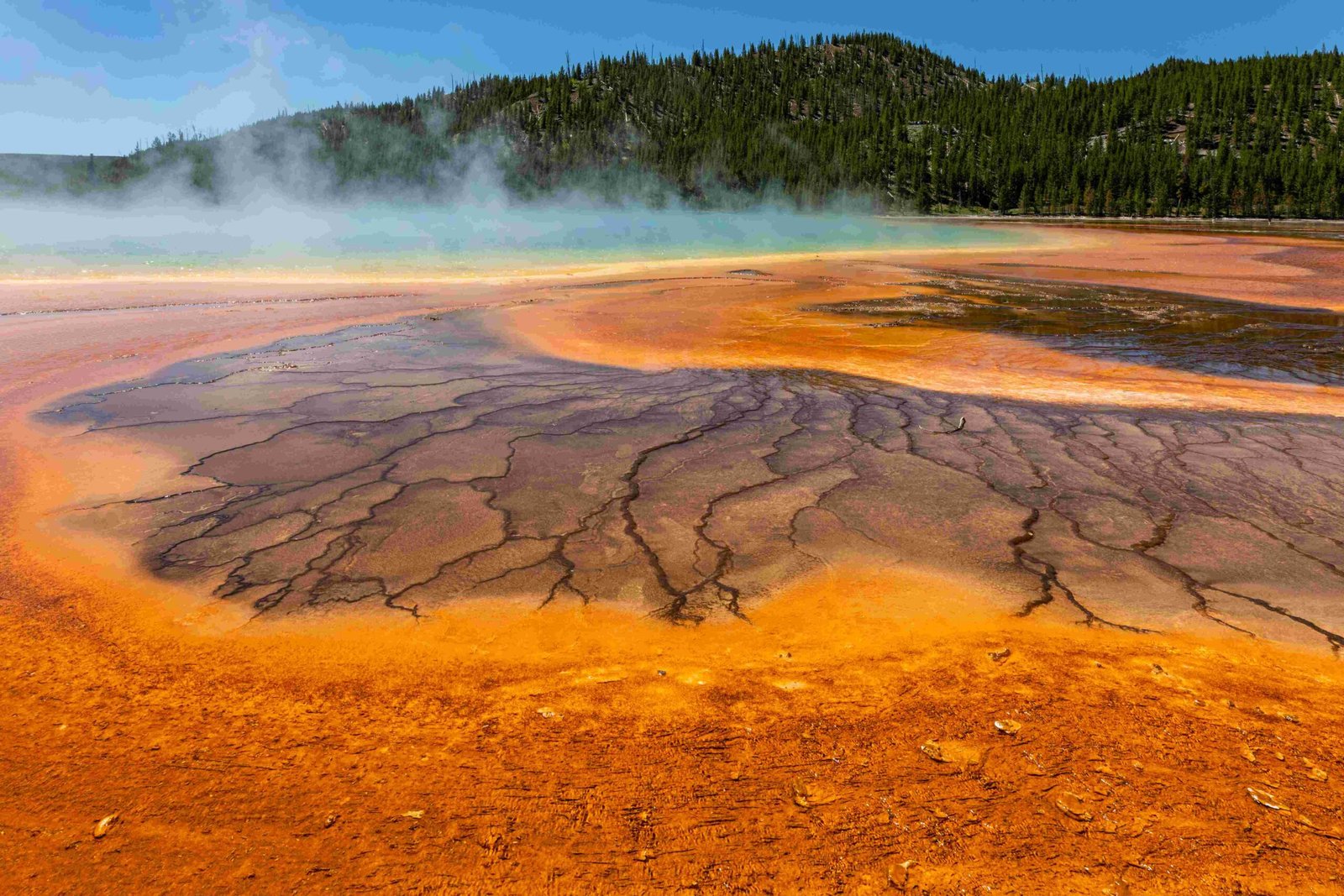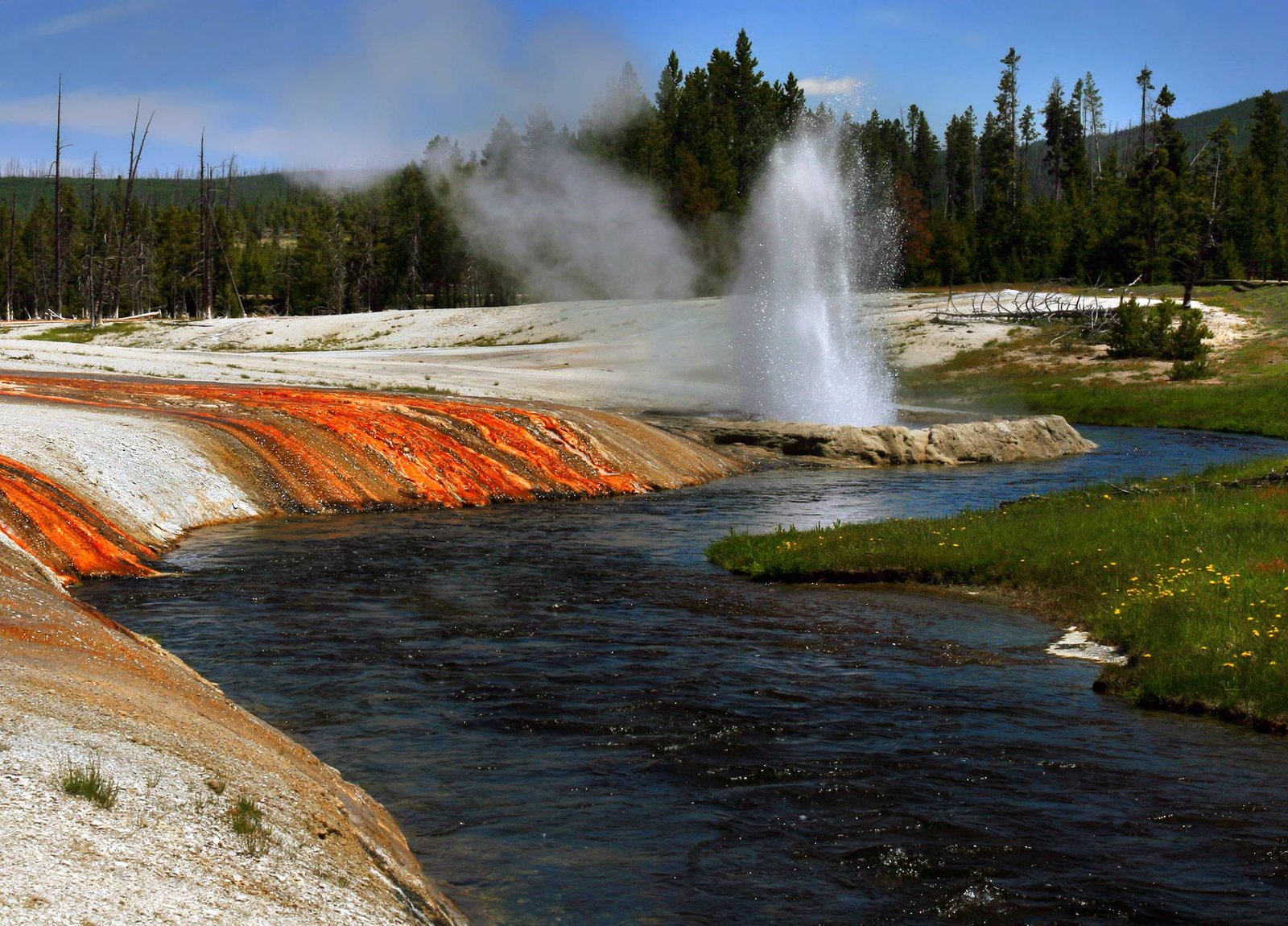Old Faithful, the iconic geyser in Yellowstone National Park, was formed by a complex interplay of geological and hydrothermal processes. Its creation is rooted in the park’s volcanic history, underground plumbing system, and unique hydrothermal conditions. The geyser’s predictable eruptions result from a delicate balance of heat, pressure, and water within the Earth’s crust, making it a fascinating natural wonder that draws millions of visitors each year.
What Are the Geological Foundations of Old Faithful?

The formation of Old Faithful is intrinsically linked to Yellowstone’s volcanic past and present. The park sits atop a massive volcanic hotspot, where magma from deep within the Earth rises close to the surface. This geological setting provides the heat source necessary for Old Faithful’s eruptions.
Key geological factors include:
- Volcanic Hotspot: A plume of magma beneath Yellowstone
- Magma Chambers: Two active reservoirs at depths of 5 to 40 km
- Fractured Bedrock: Allows water circulation and heating
The volcanic activity has created a landscape rich in geothermal features, with Old Faithful being one of the most prominent examples.
How Does the Underground Plumbing System Work?

Old Faithful’s eruptions are made possible by an intricate network of underground channels and chambers. This “plumbing system” is crucial for the geyser’s formation and operation.
Key components of the plumbing system:
- Narrow Conduits: Allow water to circulate and build pressure
- Underground Chambers: Store heated water
- Constrictions: Create pressure points for steam accumulation
The relatively simple structure of Old Faithful’s plumbing system contributes to its regular eruption pattern, setting it apart from other geysers in the park.
What Role Does the Hydrothermal Reservoir Play?
Recent scientific studies have revealed a significant hydrothermal reservoir beneath Old Faithful. This discovery sheds light on the geyser’s formation and sustained activity.
Characteristics of the hydrothermal reservoir:
| Feature | Description |
|---|---|
| Size | Approximately 200 meters in diameter |
| Capacity | Estimated 79 million gallons of water |
| Structure | Network of cracks and fractures |
This reservoir acts as a storage and heating system for the water that fuels Old Faithful’s eruptions, playing a crucial role in the geyser’s formation and ongoing activity.
How Does the Eruption Mechanism Function?
The eruption process of Old Faithful is a fascinating display of thermodynamics in action. Understanding this mechanism is key to comprehending what formed the geyser and how it continues to operate.
Eruption process steps:
- Steam bubble accumulation behind constrictions
- Heating of water above the steam bubbles
- Surface overflow and pressure decrease
- Rapid steam formation and water expulsion
- Continuation until water depletion or temperature drop
This cycle repeats, creating the regular eruption pattern that Old Faithful is famous for.
What Are the Unique Characteristics of Old Faithful’s Eruptions?
Old Faithful’s eruptions are notable for their regularity and impressive displays. These characteristics have made it one of the most studied and visited geysers in the world.
Eruption statistics:
- Interval: 79 to 109 minutes (average 98 minutes as of 2019)
- Height: 106 to 180+ feet (average 130 feet)
- Duration: 1½ to 5 minutes
- Water Volume: 3,700 to 8,400 gallons per eruption
These consistent patterns are a result of the unique geological and hydrothermal conditions that formed Old Faithful.
How Does Mineral Composition Affect Old Faithful’s Formation?
The water in Yellowstone’s geothermal features, including Old Faithful, is rich in dissolved minerals. These minerals play a significant role in shaping the geyser’s structure and influencing its eruptions.
Key mineral effects:
- Silica Deposition: Forms the geyser cone over time
- Plumbing System Alteration: Gradual changes in conduit shapes and sizes
- Water Chemistry: Affects boiling point and steam formation
The ongoing deposition of minerals continues to shape Old Faithful, making it a dynamic geological feature.
What External Factors Can Influence Old Faithful?
While Old Faithful’s formation is primarily due to internal geological processes, external factors can influence its behavior and accessibility.
Potential influencing factors:
- Earthquakes: Can alter underground pathways
- Climate Change: May affect groundwater levels and heat distribution
- Human Activity: Visitor impact and nearby development
The National Park Service closely monitors these factors to preserve Old Faithful and the surrounding geothermal area.
How Can Visitors Experience Old Faithful Safely?
To ensure the preservation of Old Faithful and visitor safety, the National Park Service has implemented various measures and facilities.
Visitor guidelines:
- Check eruption predictions at the Visitor Education Center or NPS App
- Stay on designated boardwalks and viewing areas
- Respect park rules and regulations
- Visit during different seasons for varied experiences
By following these guidelines, visitors can safely witness the spectacular eruptions that result from the unique formation of Old Faithful.
In conclusion, the formation of Old Faithful in Yellowstone National Park is a testament to the complex and dynamic geological processes at work beneath the Earth’s surface. Its regular eruptions, powered by a combination of volcanic heat, underground plumbing, and mineral-rich water, continue to captivate visitors and scientists alike. As we continue to study and protect this natural wonder, we gain deeper insights into the forces that shaped and continue to shape our planet.
References:
1. https://www.yellowstonecountry.com/blogposts/the-science-behind-old-faithful-geyser-in-yellowstone-national-park
2. https://tbi.montana.edu/outreach/YNP%20Geology_accessible.pdf
3. https://unews.utah.edu/old-faithful/
4. https://www.nps.gov/yell/planyourvisit/exploreoldfaithful.htm

